More colour and more design. More modernity. More Mini
The iconic manufacturer has upped its game on tone, texture and interiors
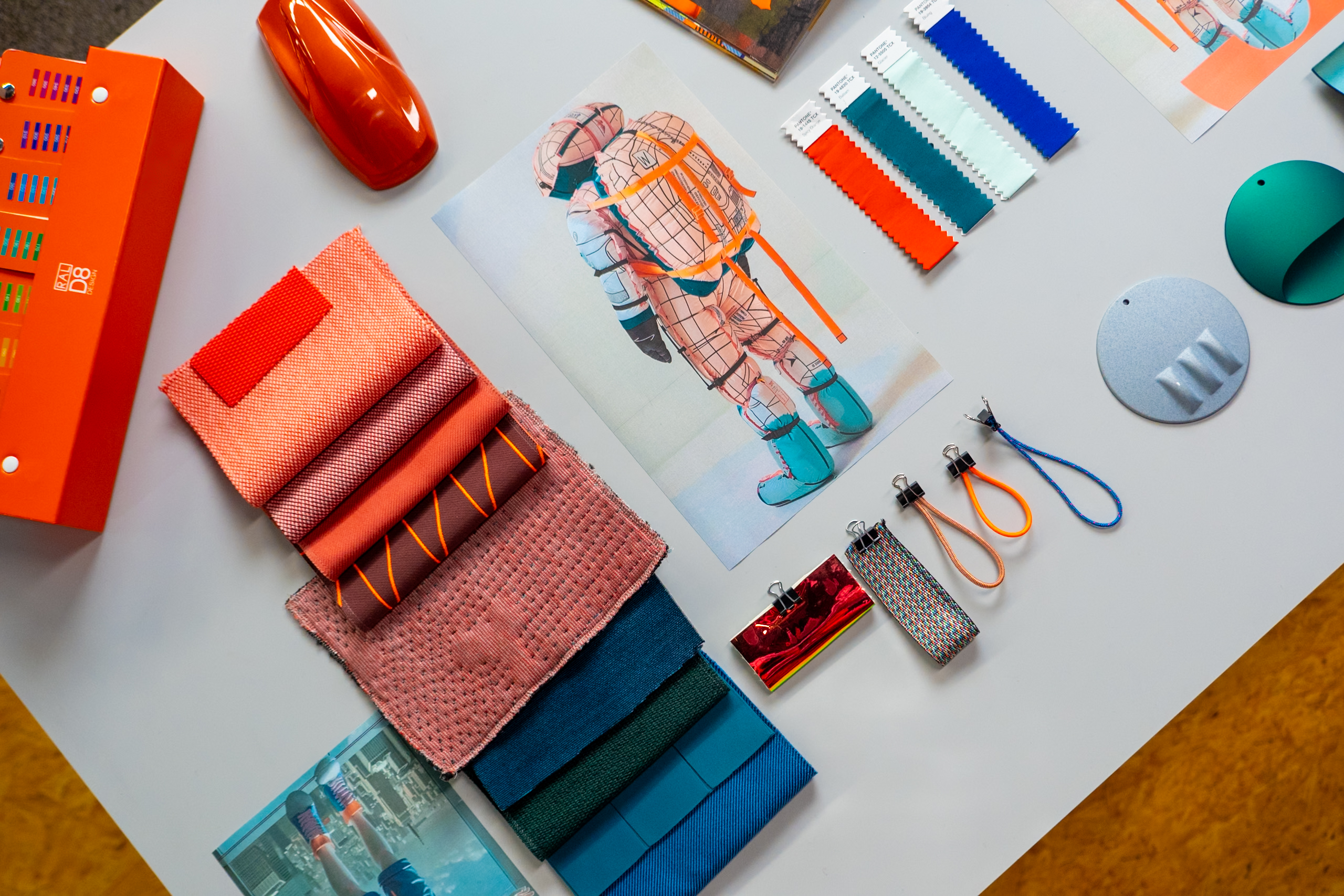
In partnership with Mini
When Mini launched the newest generation of its iconic Cooper model, it also undertook a radical audit of its approach to interior design. As for any carmaker, the art of developing new colour and material schemes exists as an independent discipline within the Mini Design Studio. Over the past few years, Mini has not only developed new patterns, colours, and micro design details, but encouraged external collaborators to explore ways in which the signature Mini elements can be reimagined for a changing age.
The new Cooper is a case in point. With a more minimal approach to the interior architecture of the car, the scene was set for the design department to use materials and textures in a more structural and dynamic way. Enthusiasts will note there’s a new and more holistic Mini design language at play, inside and out.
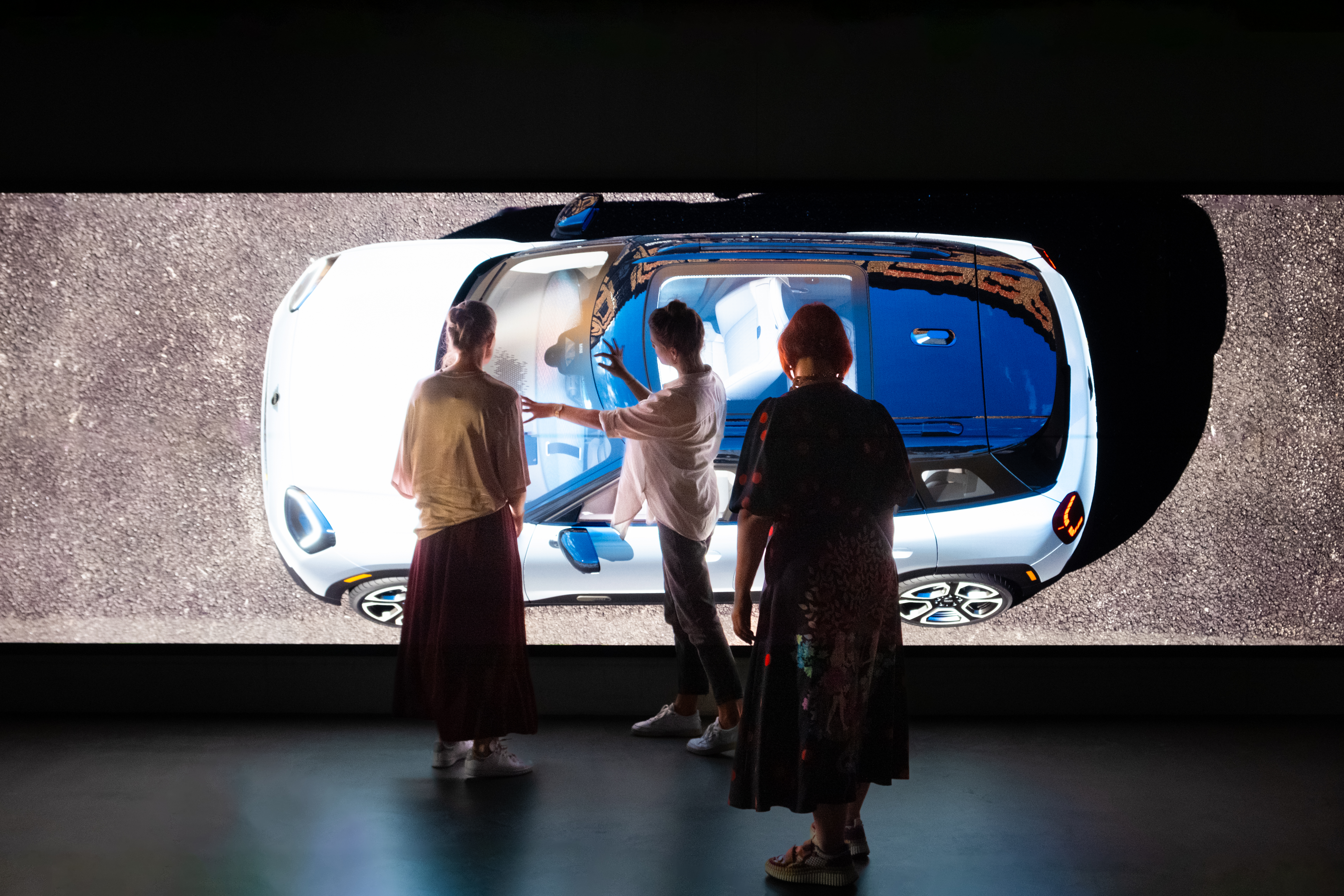
Marlies Miche, Elena Schwörer and Jeanette Ohlhäuser, part of the in-house design team
With simplified bodywork and more graphic lights reiterating Mini’s playful character and scale, the interior has been stripped back in homage to the original 1960s car, with the world’s first circular OLED screen as its centrepiece.
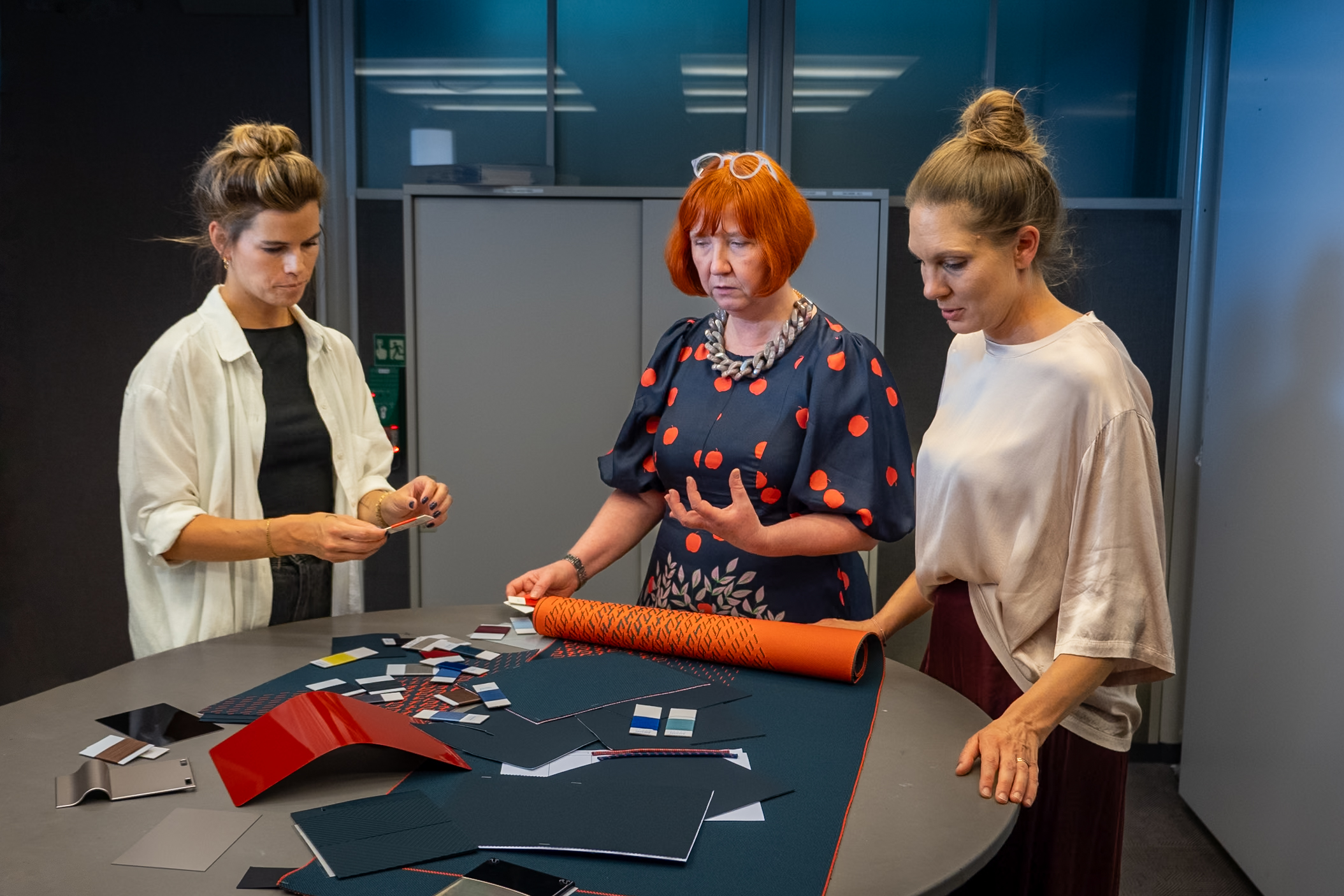
Marlies Michel, Elena Schwörer and Jeanette Ohlhäuser
To supplement this simplified approach, the emphasis has been placed on giving the upper dashboard surfaces, seats and door trims a more visual and tactile quality. Colour, too, plays a vital role. ‘We wanted to use colours that respect the heritage of the brand and at the same time create a fresh, contemporary aesthetic,’ explains Jeanette Ohlhäuser, colour designer at the Mini Design Studio. One signature colour for the new look is ‘Dark Petrol’, found inside the new all-electric Mini Aceman. It has an obvious antecedent in the British Racing Green livery that once adorned Mini’s rally-winning Coopers in the 1960s, but in the modern era the new hue also gives off a high-tech, contemporary approach.
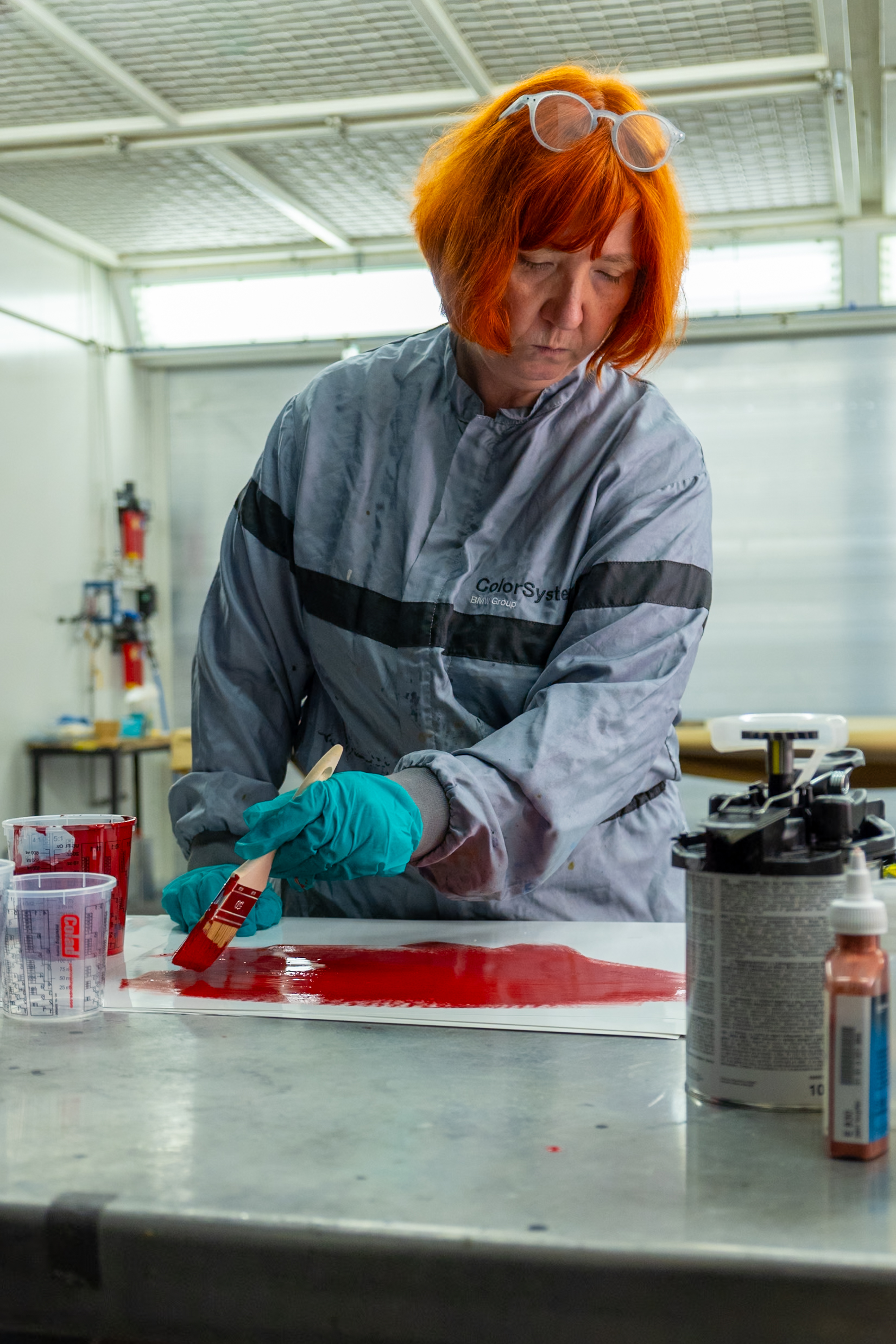
Jeanette Ohlhäuser
Textures are also important. The Aceman’s ‘Favoured Trim’ brings together a number of new visual references, with a two-tone knitted textile on the dashboard and door trim that combines Petrol with an orange pattern, as well as sport seats made from perforated vegan leather with accented stitching. Another new exterior colour, ‘Rebel Red’, is designed as a dynamic paint surface, with different lighting conditions revealing shifting shades of red and orange.
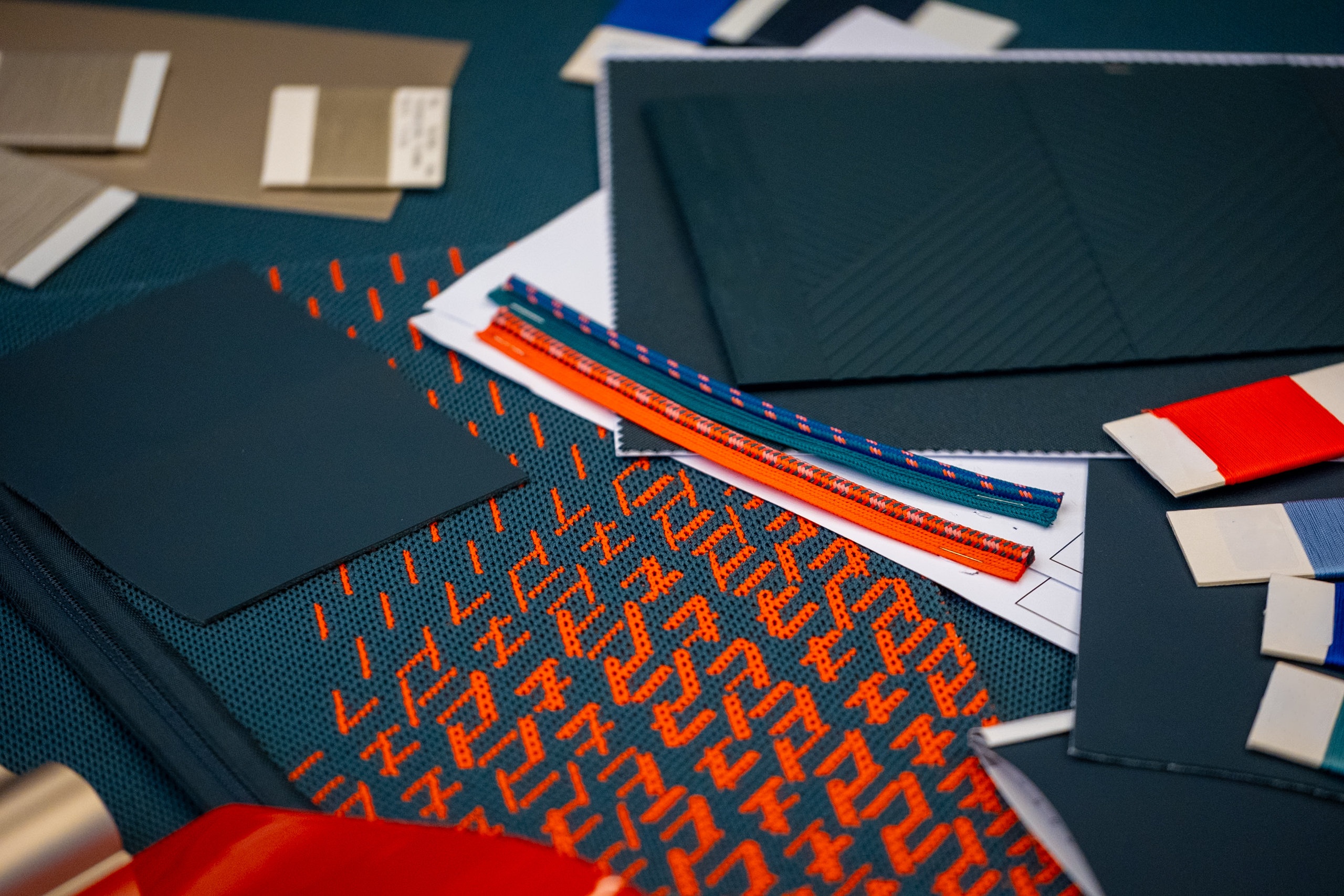
The new two-tone knitted textile
Achieving these combination finishes has required new processes and techniques. Mini’s team developed a 2D weaving process incorporating recycled polyester fibre to create the sense of depth and warmth in the dashboard trim material. ‘This process allows us to create unique dual-colour designs that bring a special aesthetic and atmosphere to the interior,’ says Elena Schwörer, Mini’s textiles designer. ‘Woven materials are not only visually appealing, but they also offer a much more attractive tactile experience.’ Schwörer points out the 3D effect achieved with a lower layer of contrasting colour, which subtly shines through the upper.
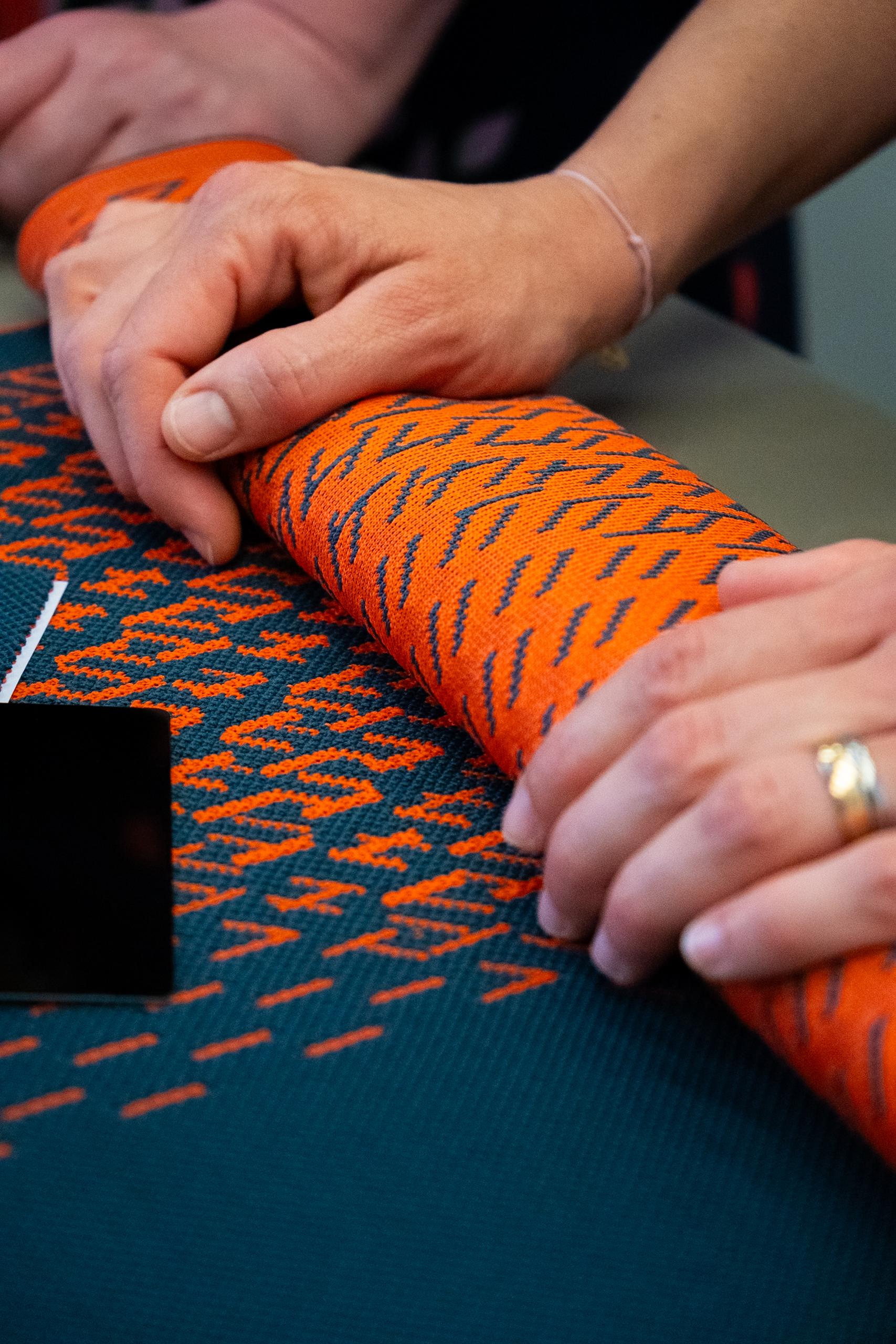
Close up of the dual-tone Mini textiles
Inspiration here has come from all around, notably the worlds of fashion and sneaker design. Screens and switchgear might be simplified, but the new processes furnish the new Mini with visual richness, giving the interior a unique depth and feel.
Other innovations can be found in the John Cooper Works trim. This performance variant includes headrests with specially 2D woven surfaces that extend into the shoulder areas. A new ‘Vibrant Silver’ accent colour has been used to off-set the contrasting stitching on the sports steering wheel. Practically no surface is overlooked – even the interior plastics are given a subtle but distinctive grain.
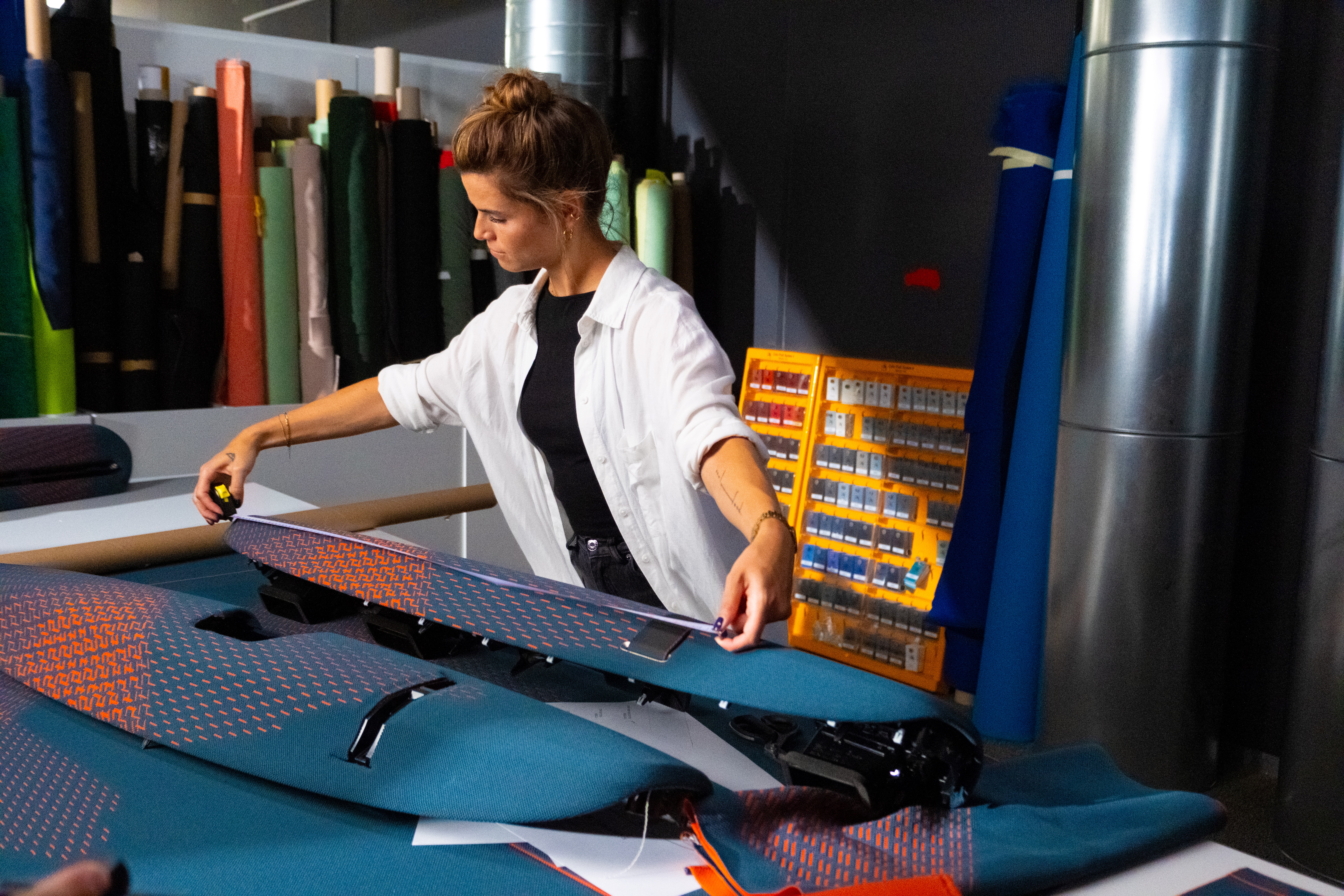
Elena Schwörer
‘It is important to us that the texture of the surfaces harmonises perfectly with the other materials, such as the woven fabric in the interior,’ says Marlies Michel, the designer responsible for this surface ‘graining’. ‘The blueprints for the various surface textures used in the new Mini model family are based on influences that the design team draws from nature and science,’ Michel continues. ‘It could be the grain on wood or rock, for example – but it could just as easily be a satellite photo of the Earth, where geographic features become graphic elements, providing us with inspiration for new grain patterns and structures.’
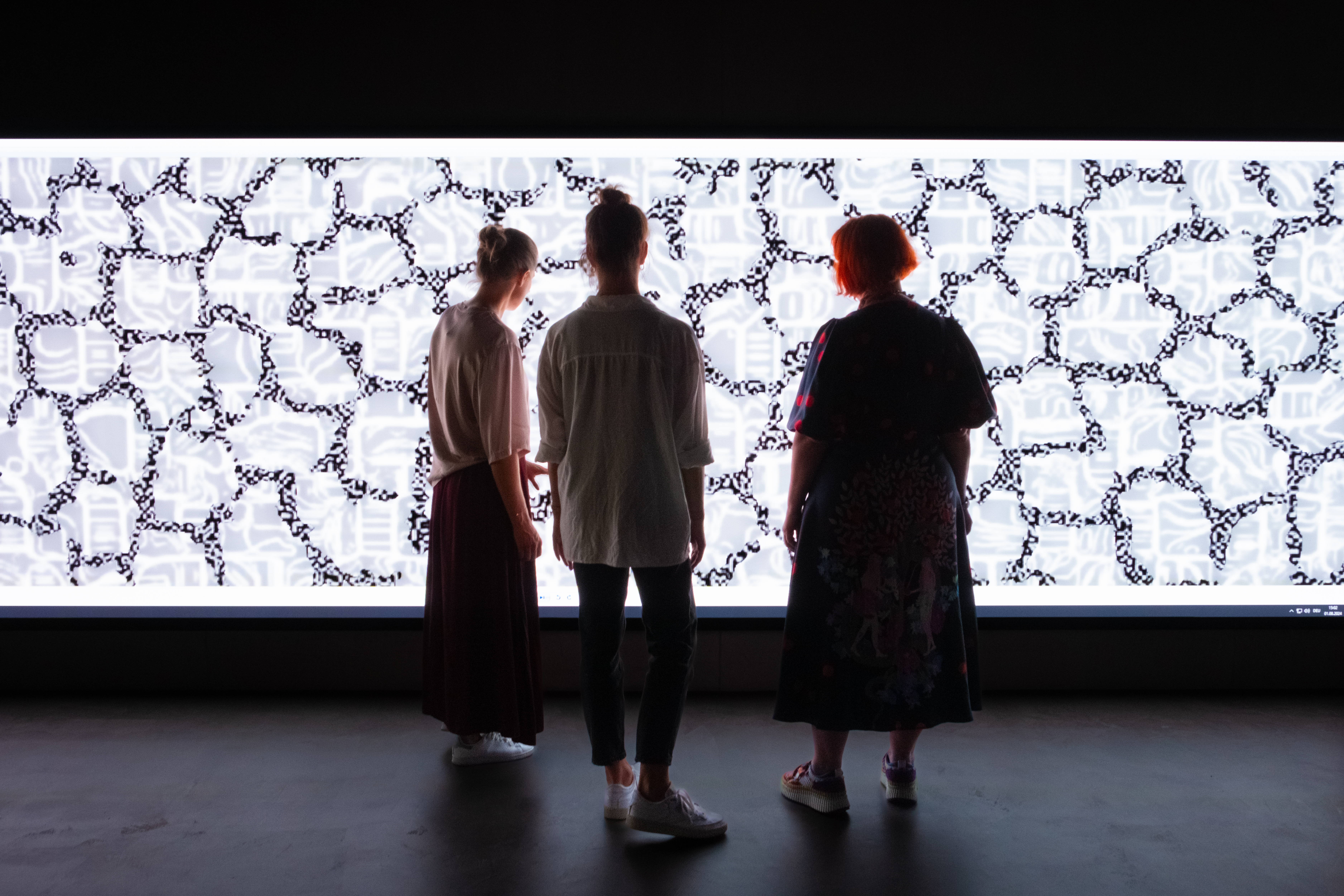
The team examine a close-up of a textile pattern
By drawing inspiration from technology, fashion, art, architecture and even contemporary furniture, Mini’s interiors team have built a new aesthetic portfolio for Cooper and Aceman. This new aesthetic has become an integral part of the Mini experience, showing how many small individual elements come together to shape a harmonious, modern and high-quality whole. It’s a smart equation that matches the genius of Mini’s engineering package and exterior design. As the brand puts it, colour and material design = more character + more modernity. And ultimately, more Mini.
Wallpaper* Newsletter
Receive our daily digest of inspiration, escapism and design stories from around the world direct to your inbox.
Jonathan Bell has written for Wallpaper* magazine since 1999, covering everything from architecture and transport design to books, tech and graphic design. He is now the magazine’s Transport and Technology Editor. Jonathan has written and edited 15 books, including Concept Car Design, 21st Century House, and The New Modern House. He is also the host of Wallpaper’s first podcast.
-
 Marylebone restaurant Nina turns up the volume on Italian dining
Marylebone restaurant Nina turns up the volume on Italian diningAt Nina, don’t expect a view of the Amalfi Coast. Do expect pasta, leopard print and industrial chic
By Sofia de la Cruz
-
 Tour the wonderful homes of ‘Casa Mexicana’, an ode to residential architecture in Mexico
Tour the wonderful homes of ‘Casa Mexicana’, an ode to residential architecture in Mexico‘Casa Mexicana’ is a new book celebrating the country’s residential architecture, highlighting its influence across the world
By Ellie Stathaki
-
 Jonathan Anderson is heading to Dior Men
Jonathan Anderson is heading to Dior MenAfter months of speculation, it has been confirmed this morning that Jonathan Anderson, who left Loewe earlier this year, is the successor to Kim Jones at Dior Men
By Jack Moss
-
 Coming soon: a curated collection of all the new EVs and hybrids that matter
Coming soon: a curated collection of all the new EVs and hybrids that matterWe've rounded up new and updated offerings from Audi, Porsche, Ineos, Mini and more to keep tabs on the shifting sands of the mainstream car market
By Jonathan Bell
-
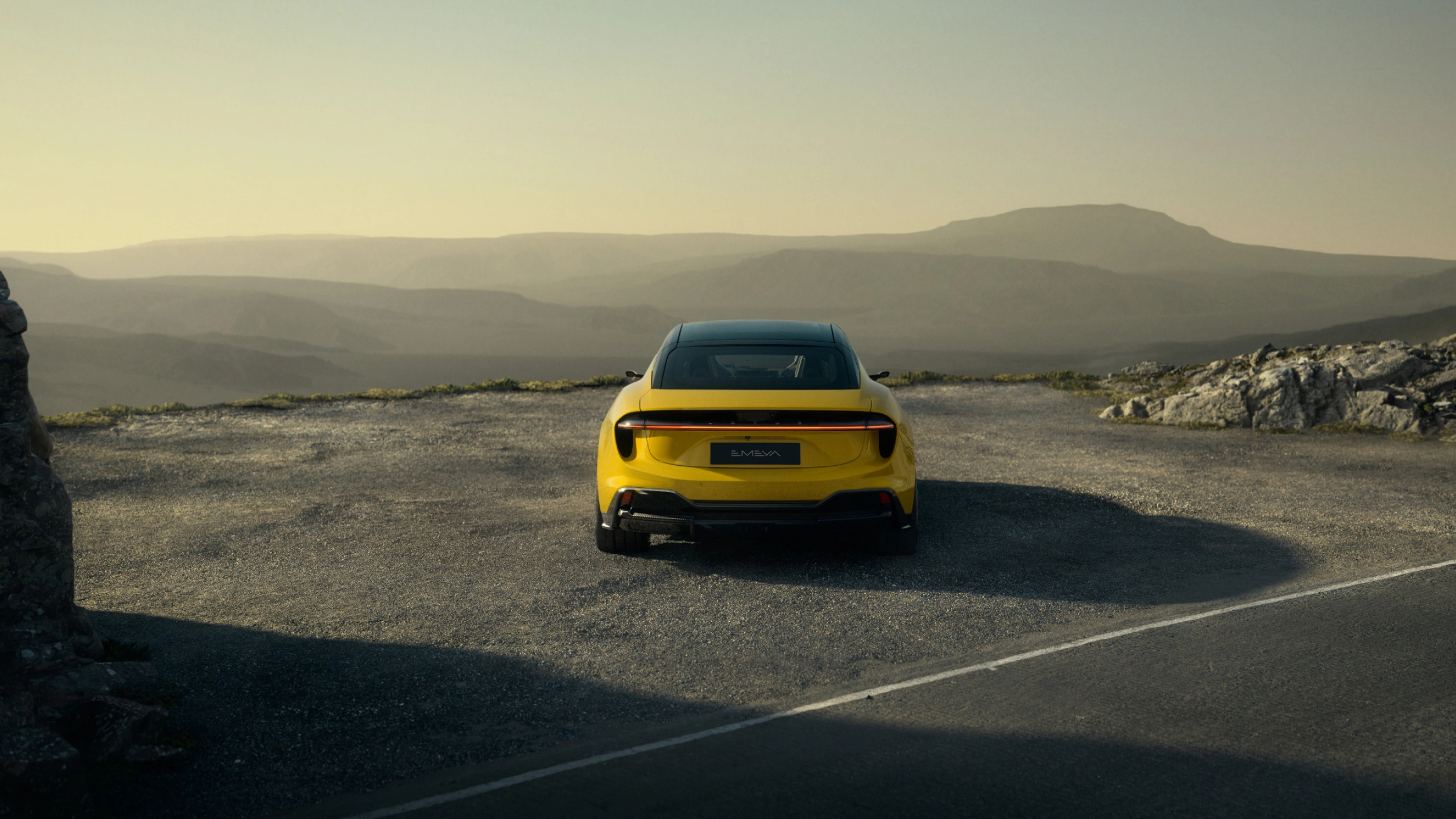 24 transportation design innovations for 2024
24 transportation design innovations for 2024From electric cars to new airports and sports boats, here’s a non-exhaustive list of 24 of the most interesting transportation design innovations to expect in the coming year
By Jonathan Bell
-
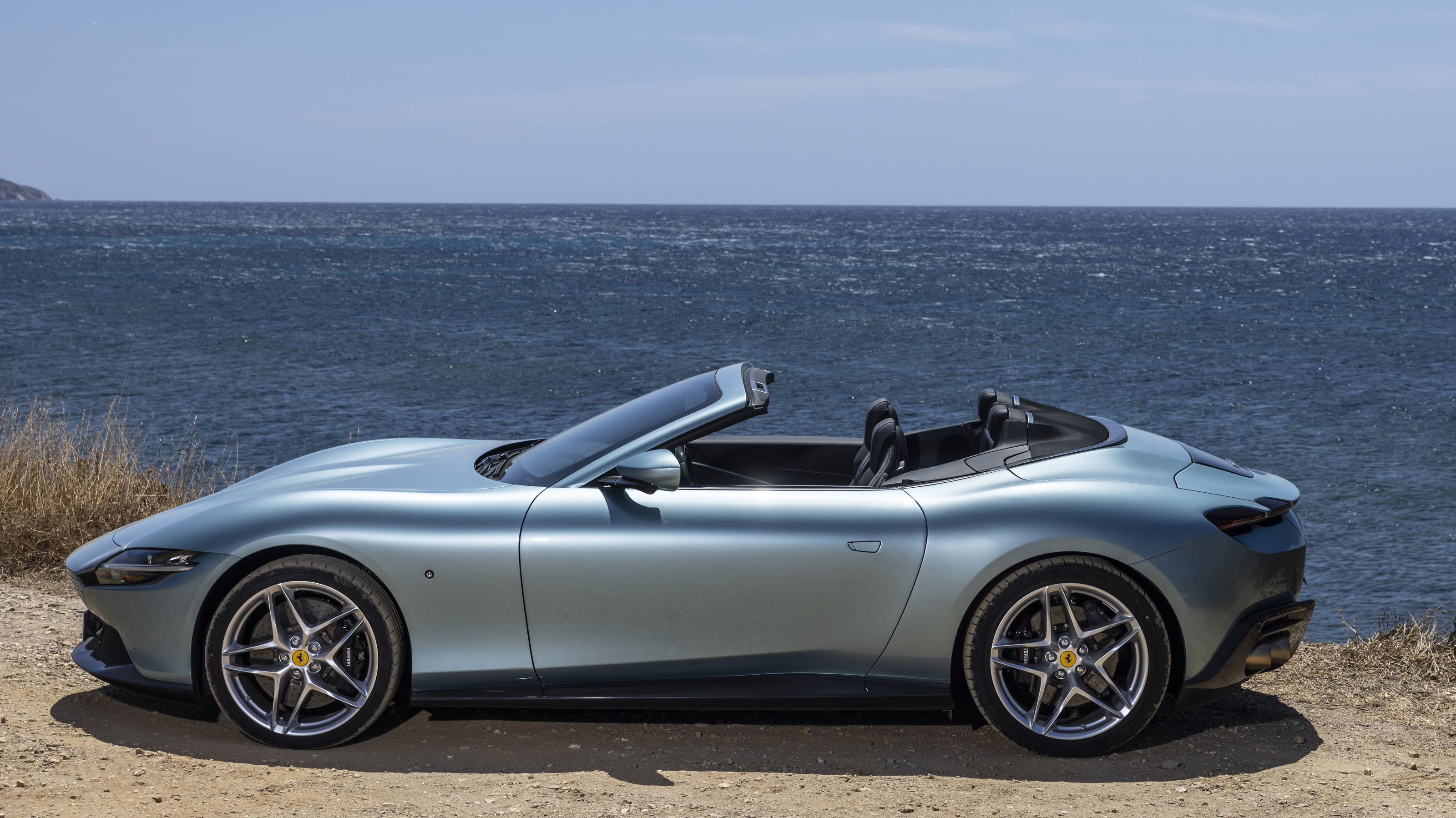 Year in review: the top 10 cars of 2023, as selected by Wallpaper’s Jonathan Bell
Year in review: the top 10 cars of 2023, as selected by Wallpaper’s Jonathan BellWhat were the best four-wheeled offerings of 2023? Transport editor Jonathan Bell takes us through the year’s most intriguing automobiles
By Jonathan Bell
-
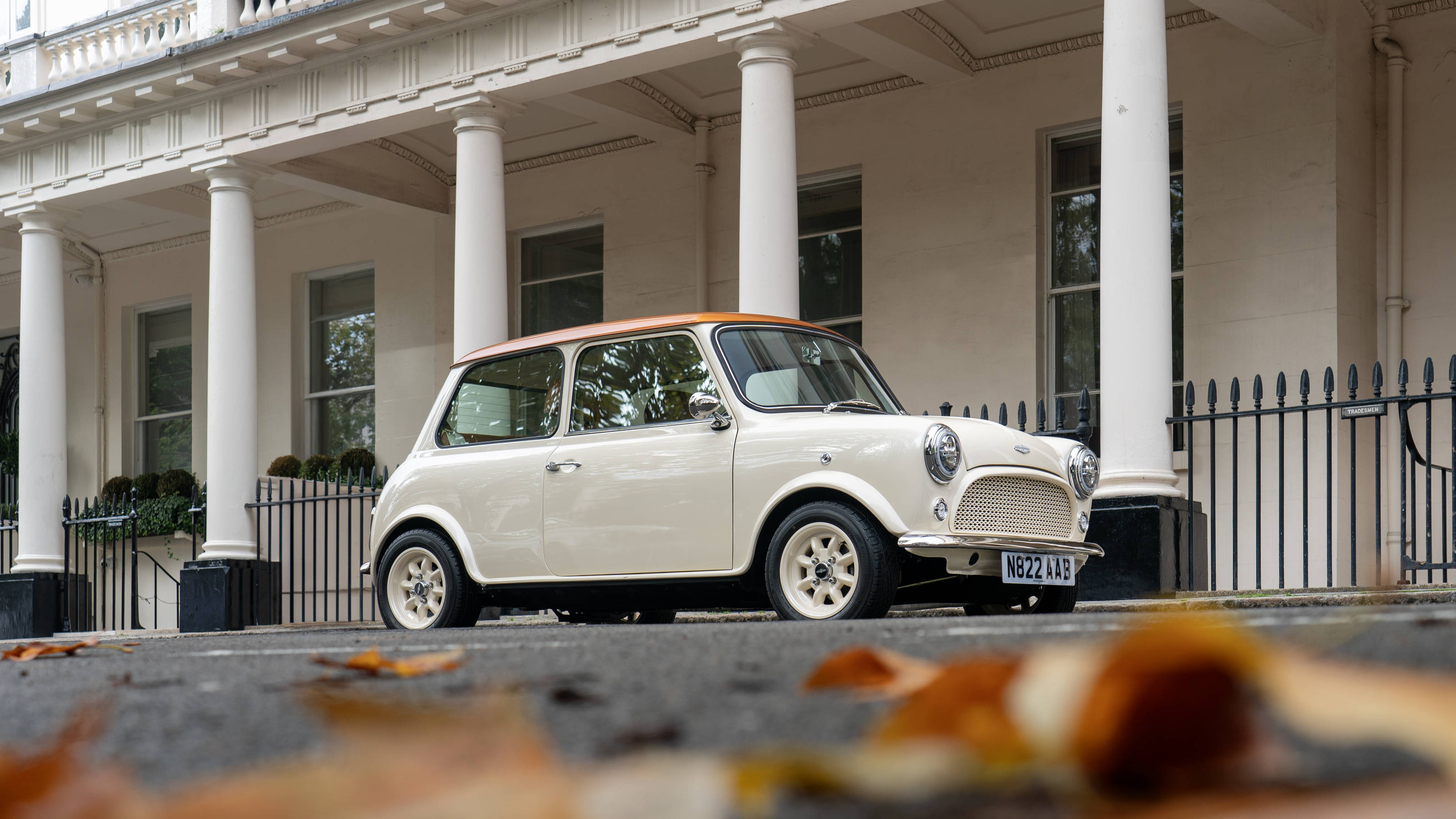 David Brown Automotive transforms original Mini into a high-end, high-spec EV
David Brown Automotive transforms original Mini into a high-end, high-spec EVThe DBA Mini eMastered: luxury motoring is rarely so altruistic and joyful
By Jonathan Bell
-
 Mini E-Bike 1, with Angell Mobility, is the carmaker’s first electric two-wheeler
Mini E-Bike 1, with Angell Mobility, is the carmaker’s first electric two-wheelerThe Mini E-Bike 1 opens up a new chapter for Mini, a collaboration that adds another mobility option to its freshly electrified range
By Jonathan Bell
-
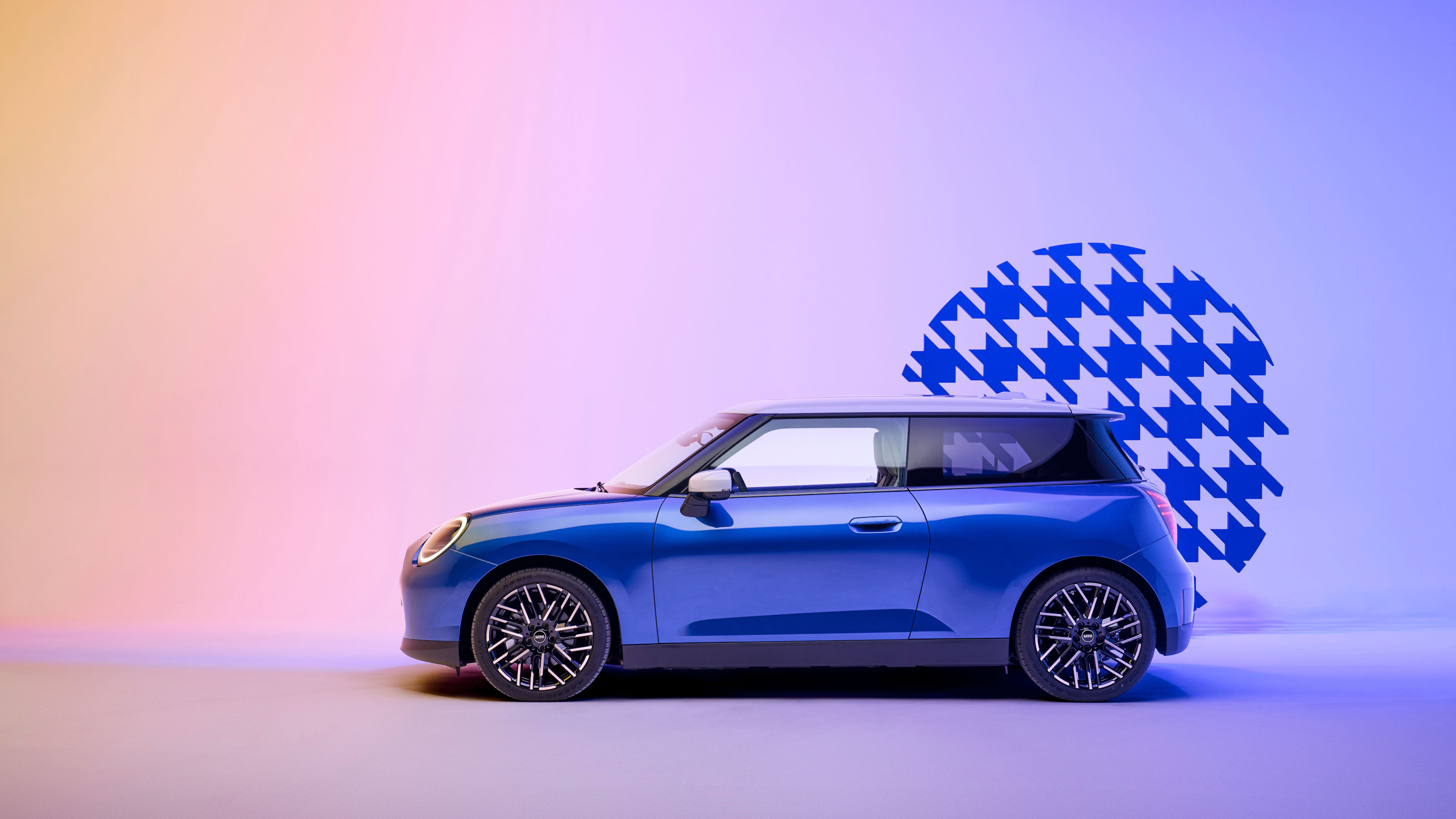 Two new electric Minis bring back the playful spirit of the original
Two new electric Minis bring back the playful spirit of the originalThe new Mini Countryman and Mini Cooper give the modern icon a cleaner, minimal appearance and bolster the interior tech and trim
By Jonathan Bell
-
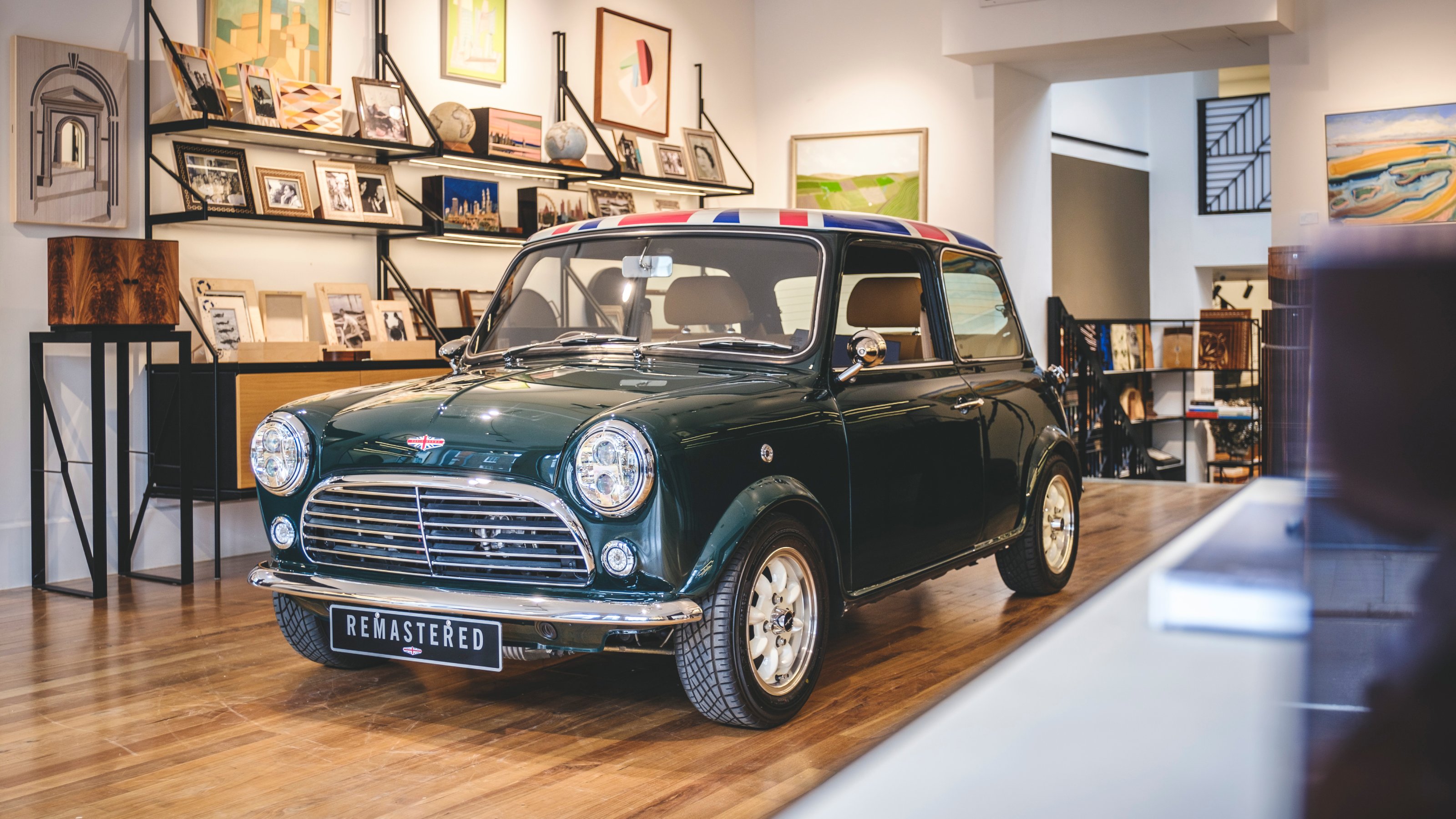 Coronation-edition Mini Remastered by DBA flies the flag in London’s Linley showroom
Coronation-edition Mini Remastered by DBA flies the flag in London’s Linley showroomA pocket-sized piece of coronation memorabilia, the ultimate Mini Remastered by David Brown Automotive is showcased by Linley
By Jonathan Bell
-
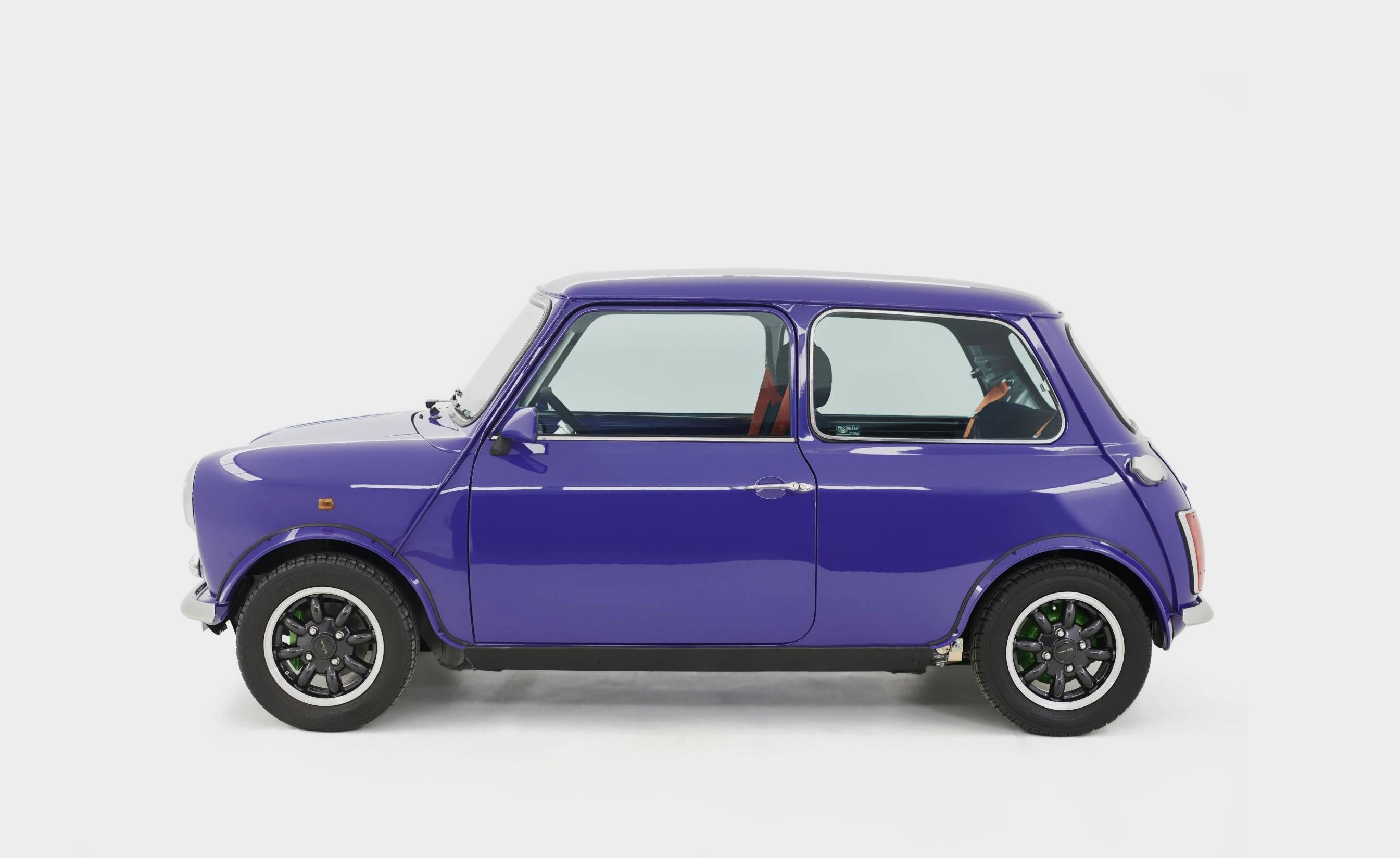 Mini Recharged: Sir Paul Smith’s contemporary cut for a classic
Mini Recharged: Sir Paul Smith’s contemporary cut for a classicReimagining his 1998 take on the small car with a big following, Sir Paul Smith tailors the stripped-back 2022 Mini Recharged
By Jonathan Bell